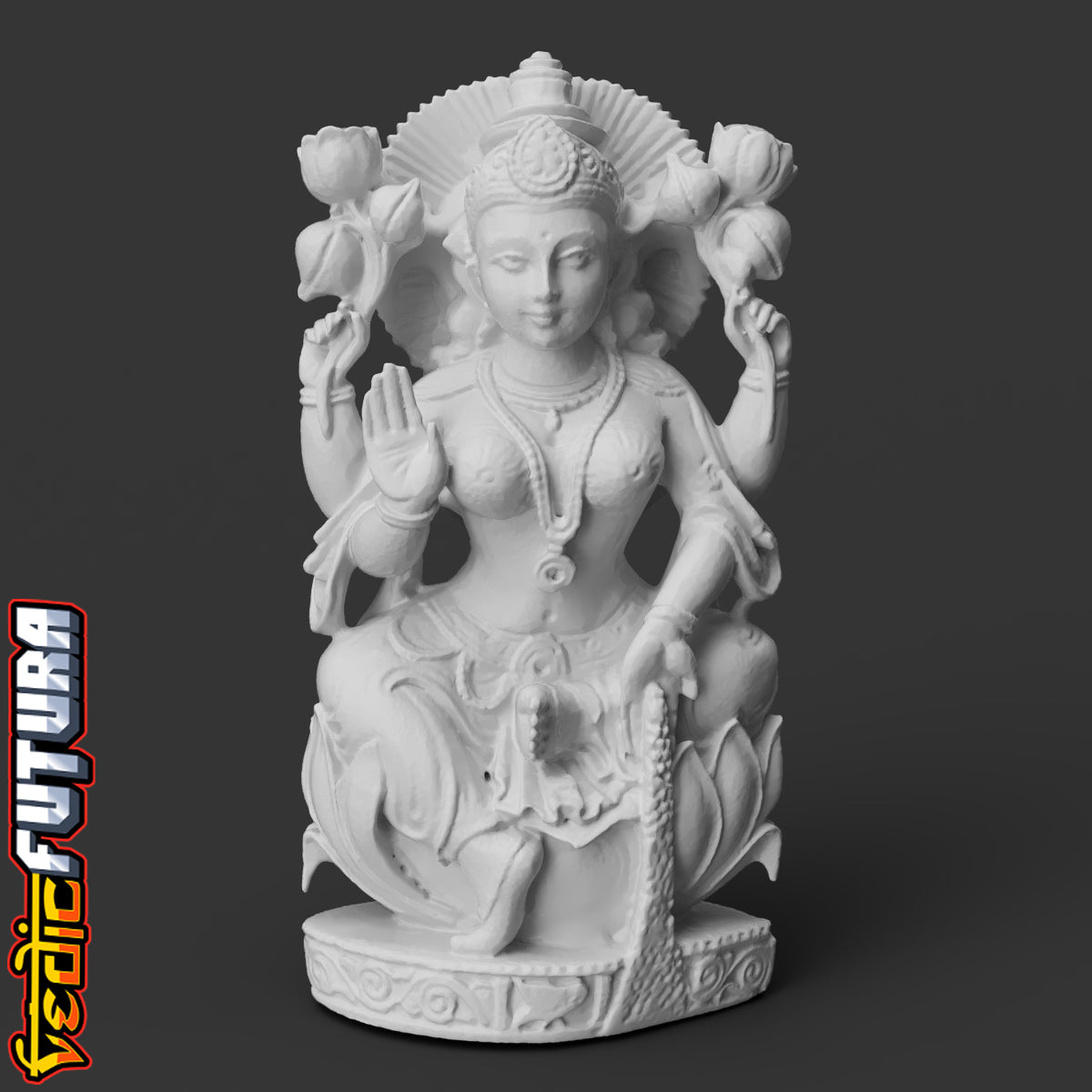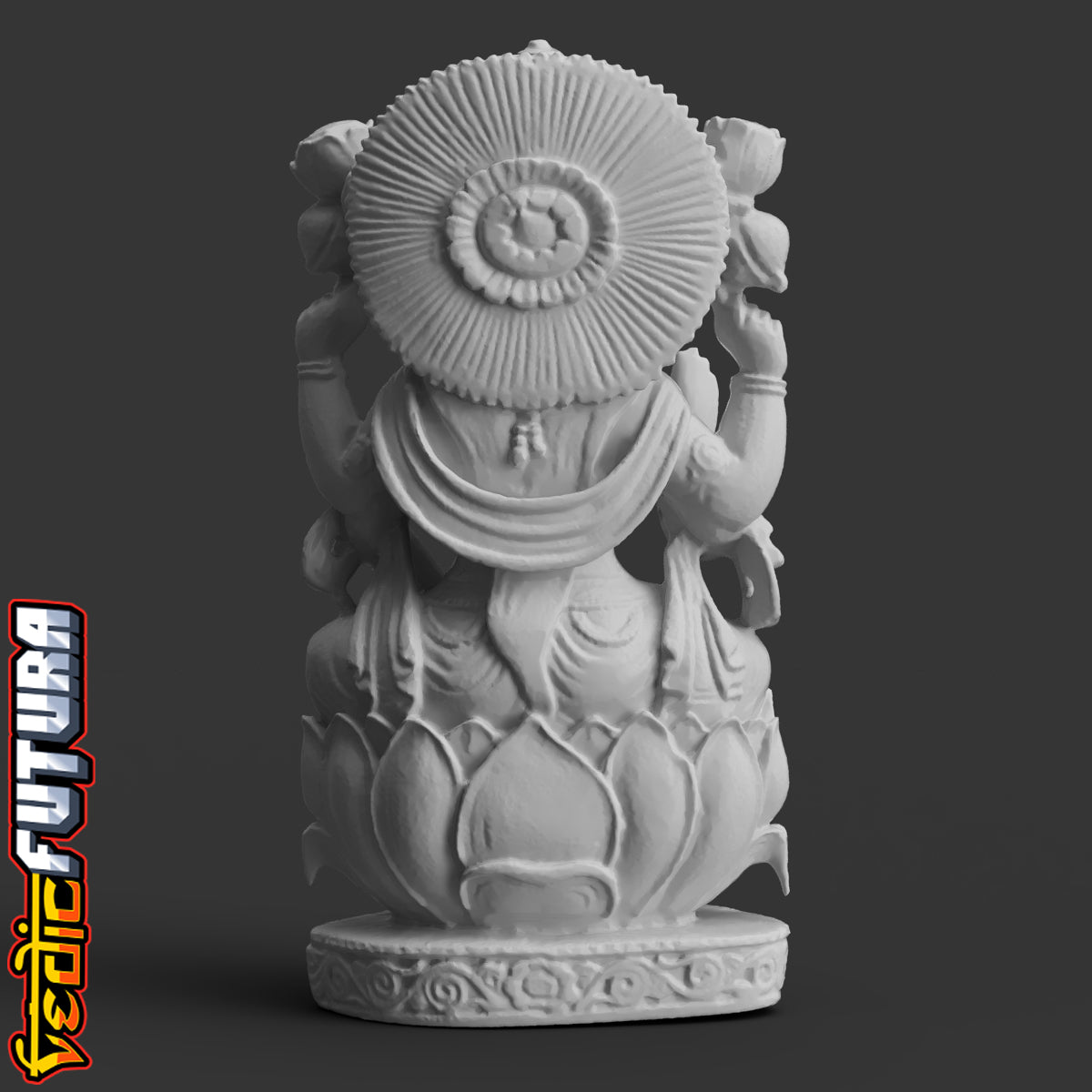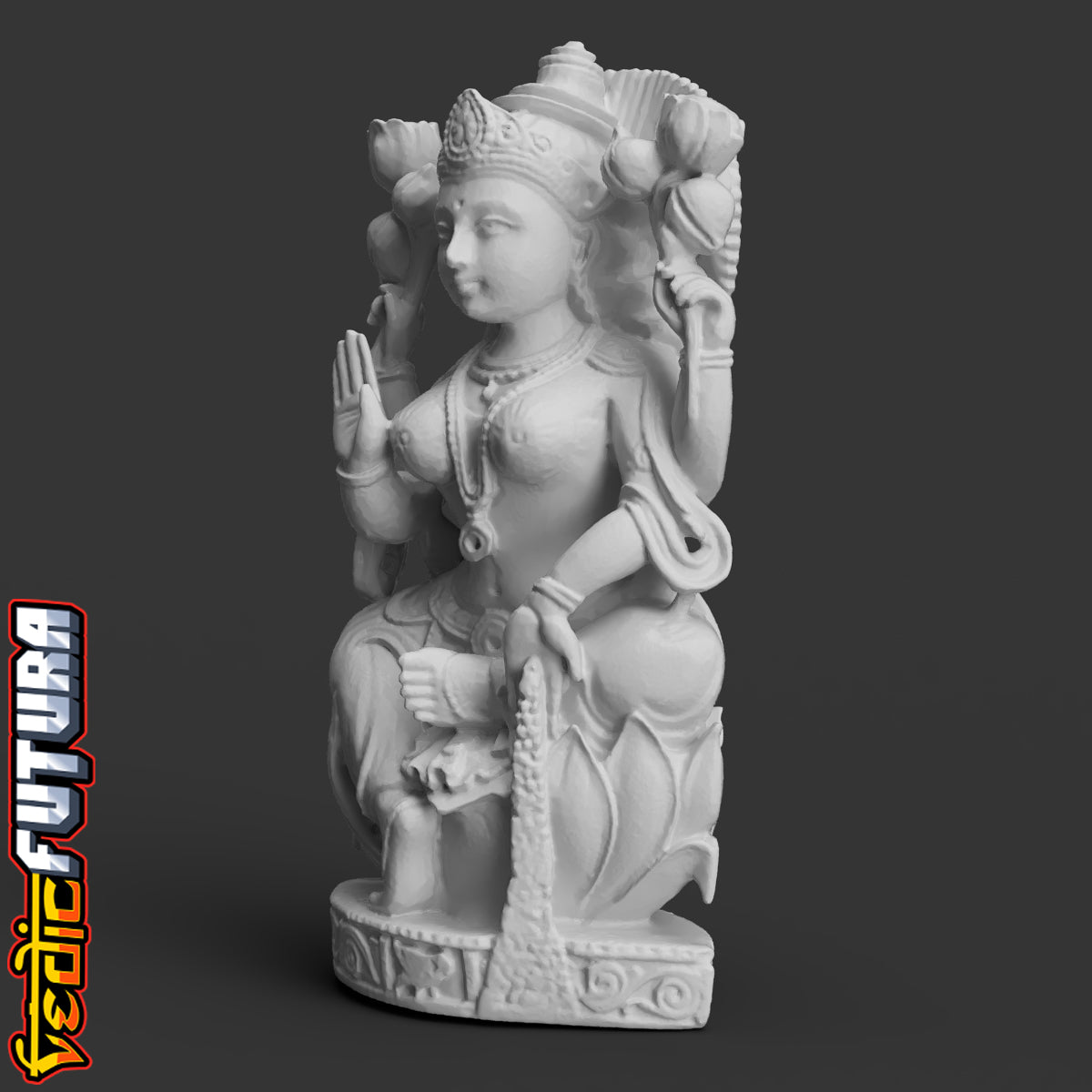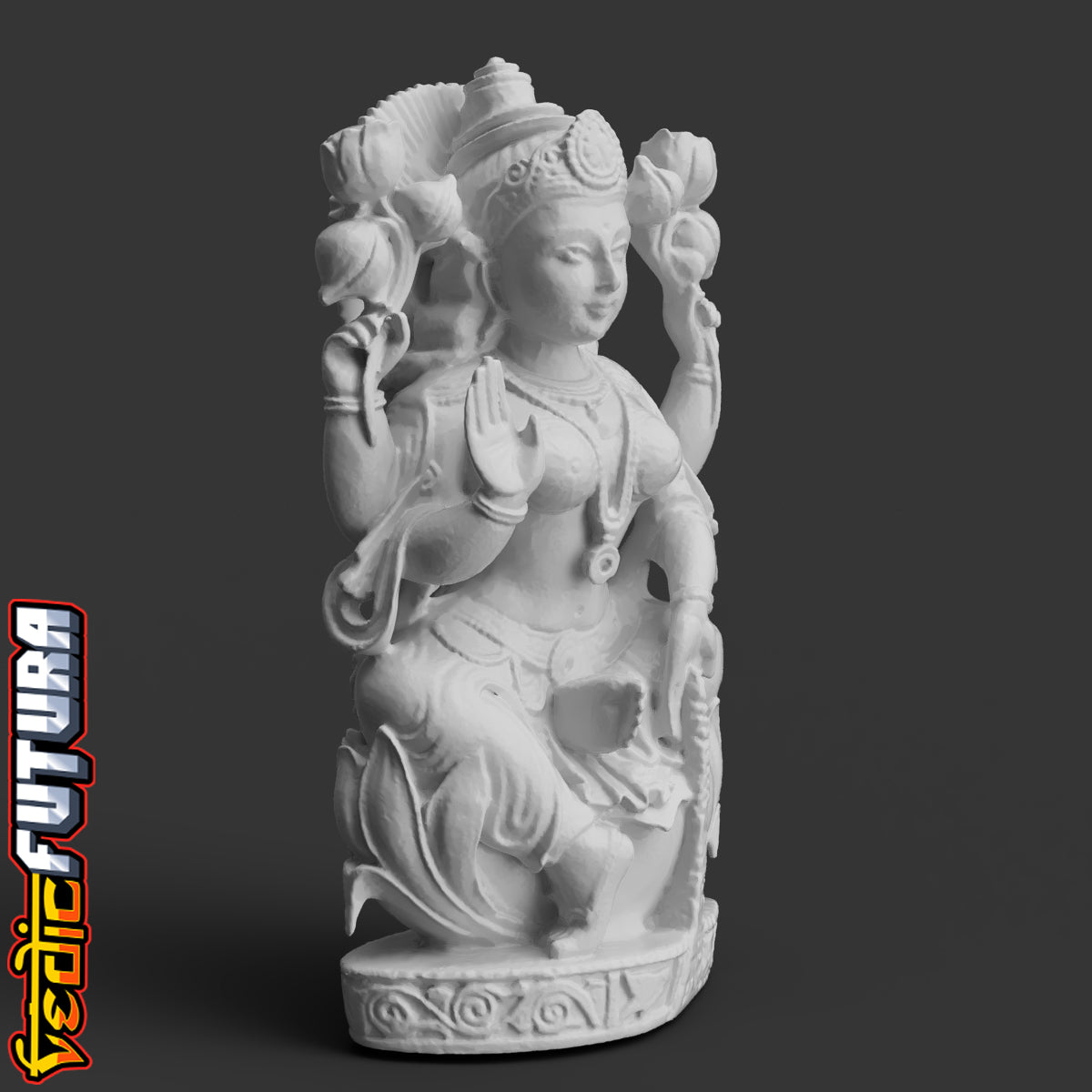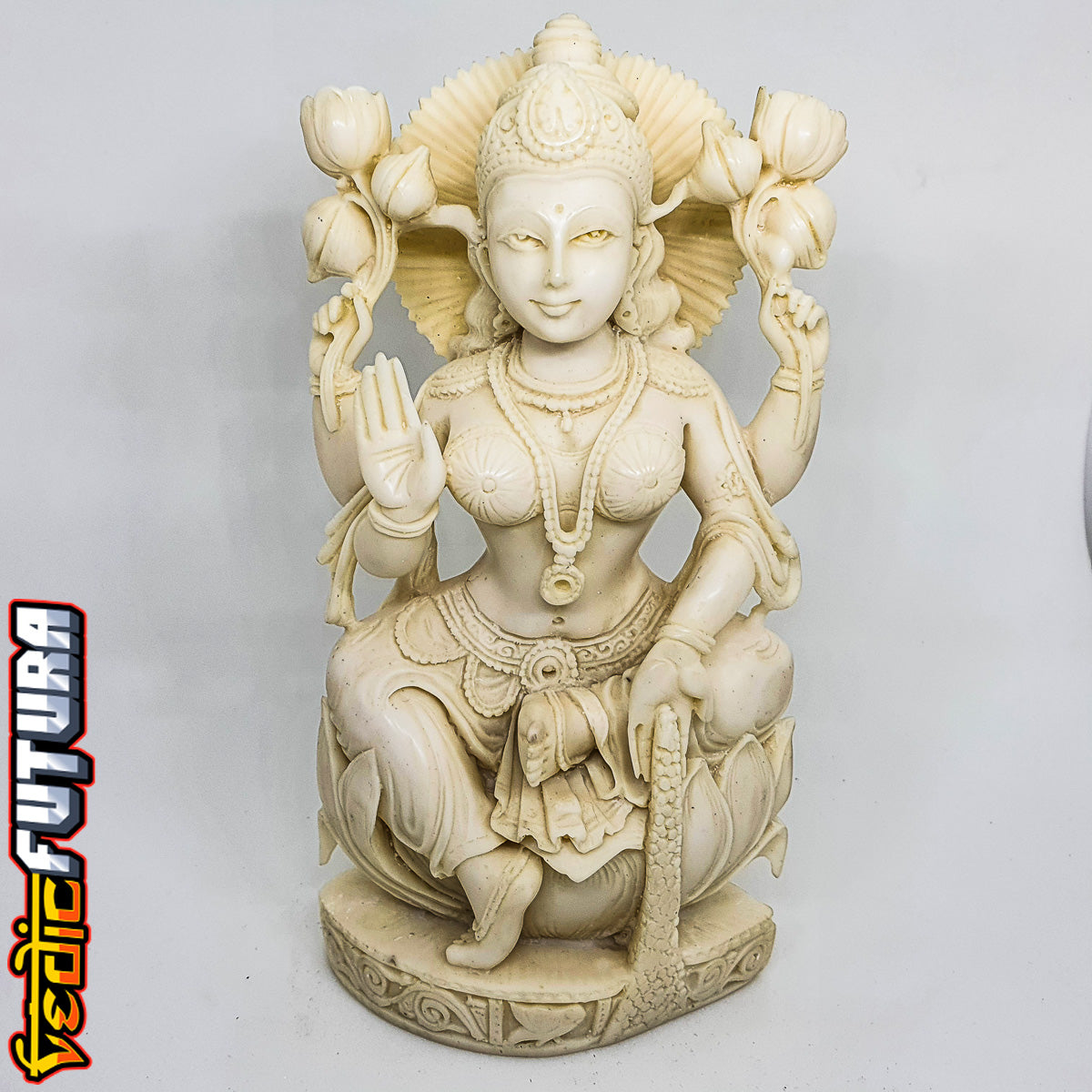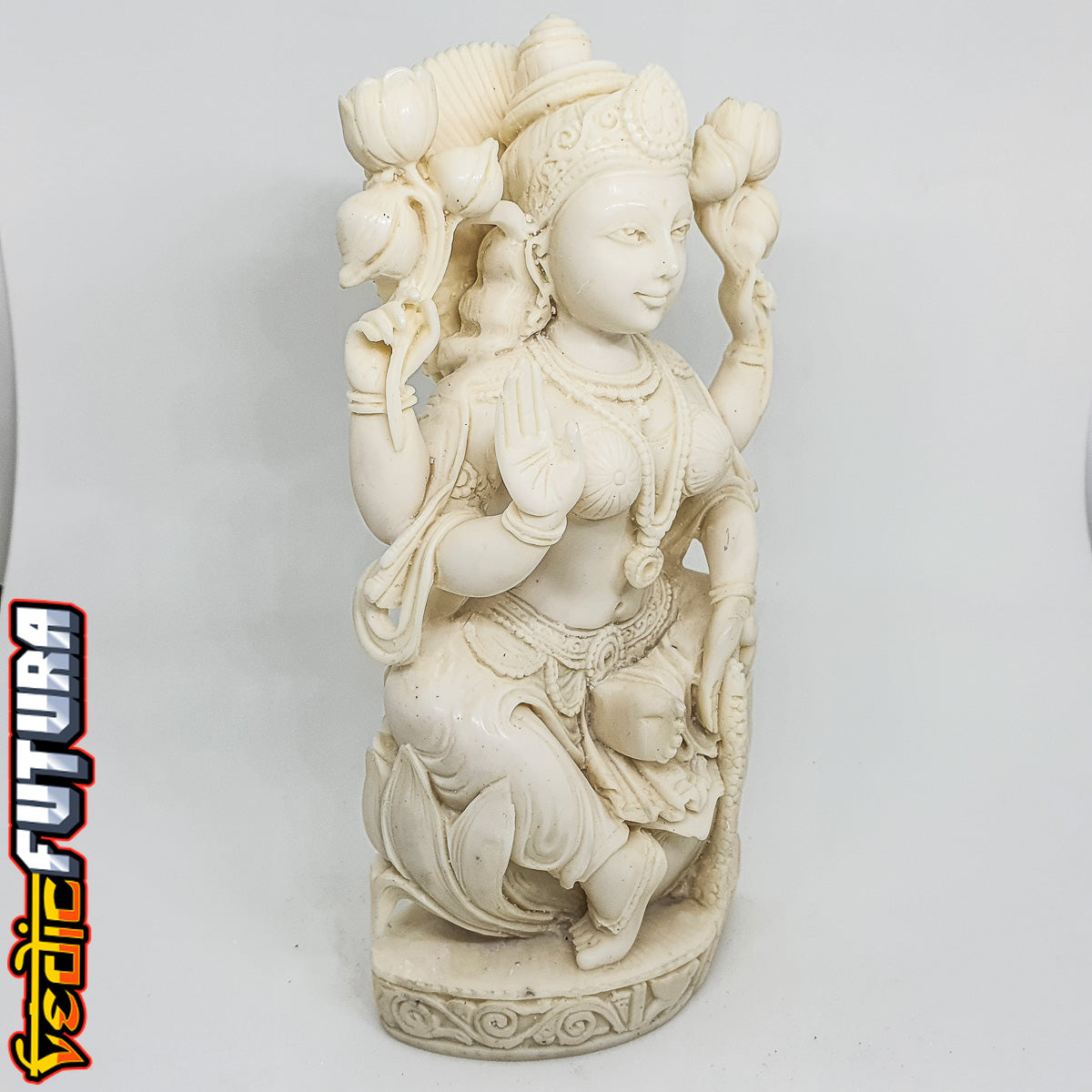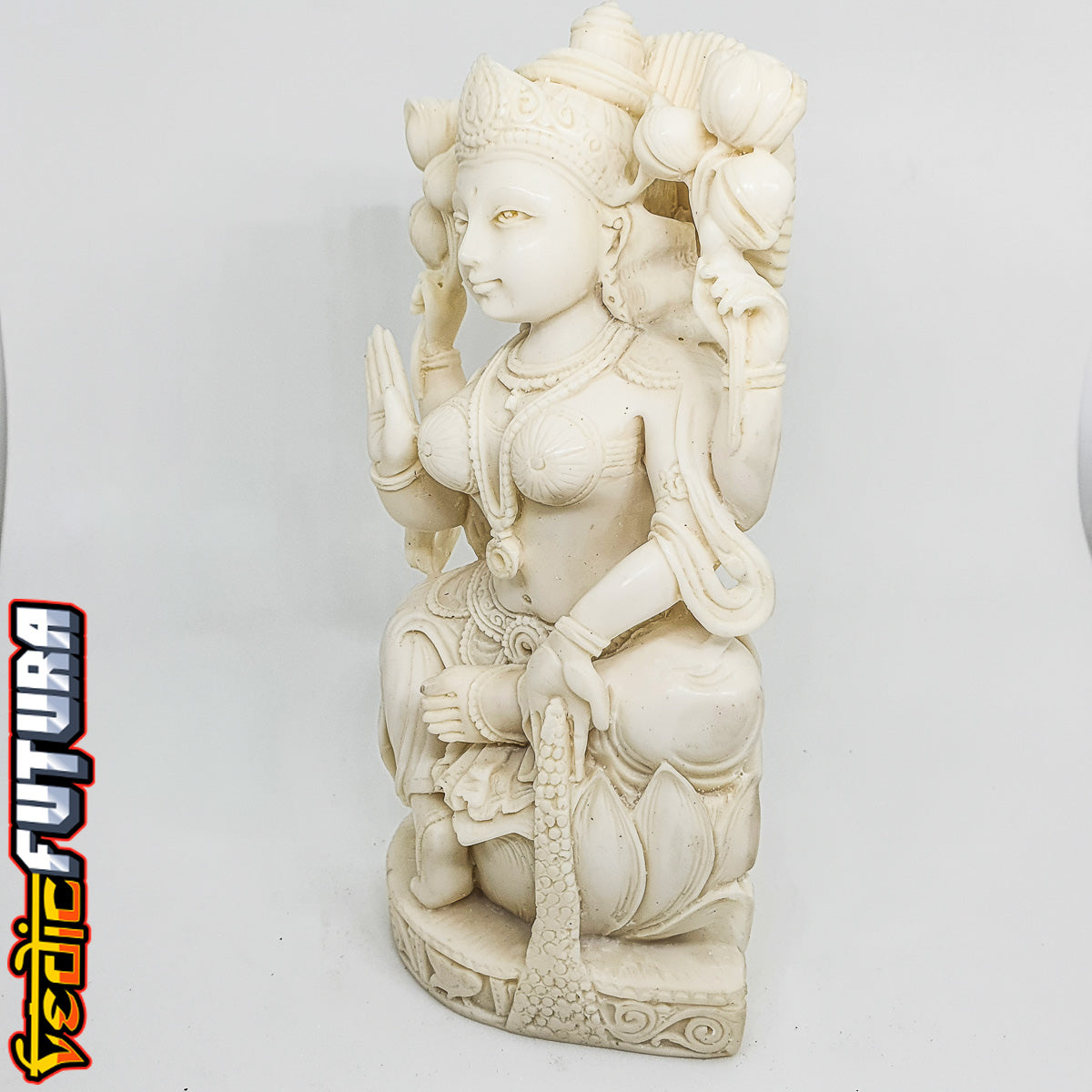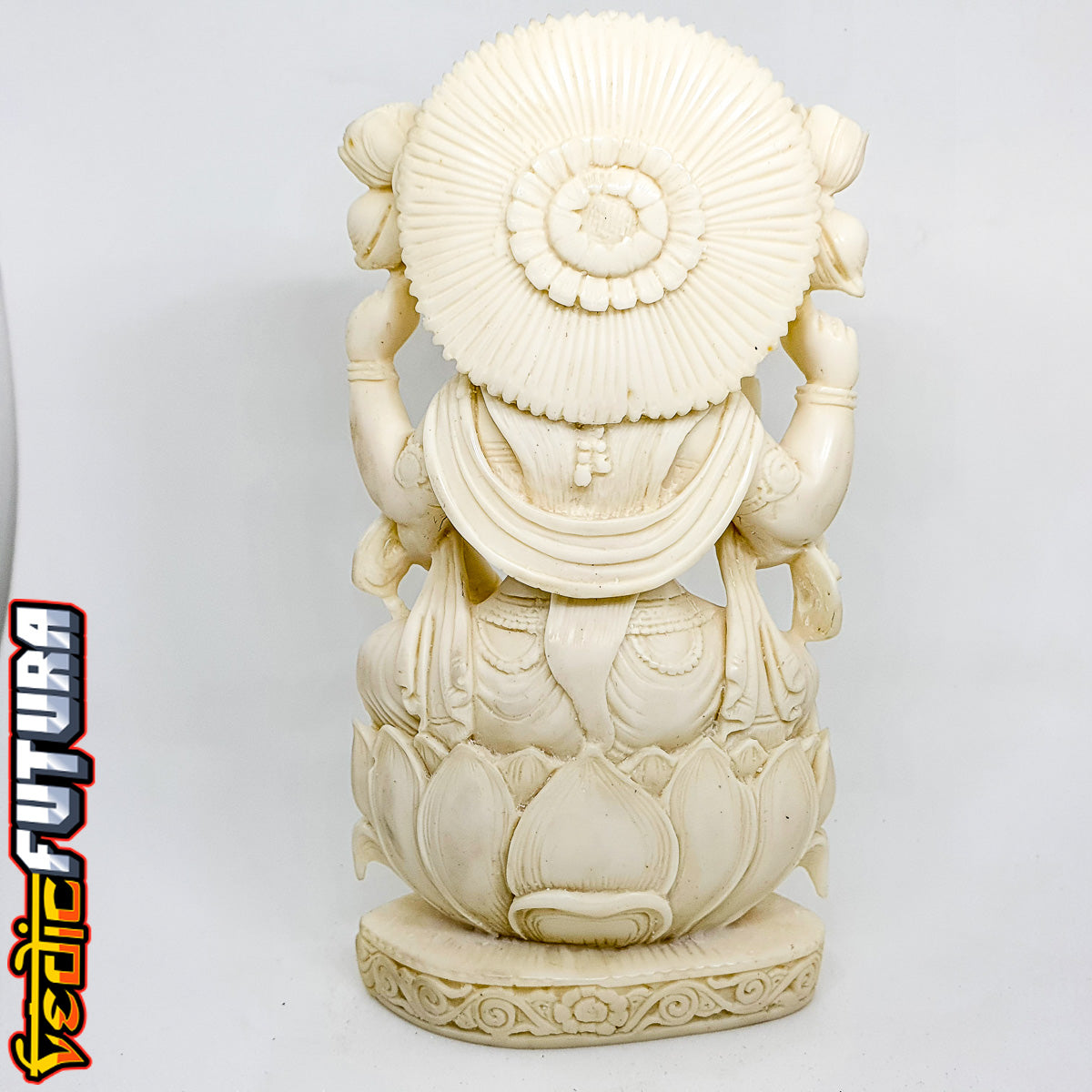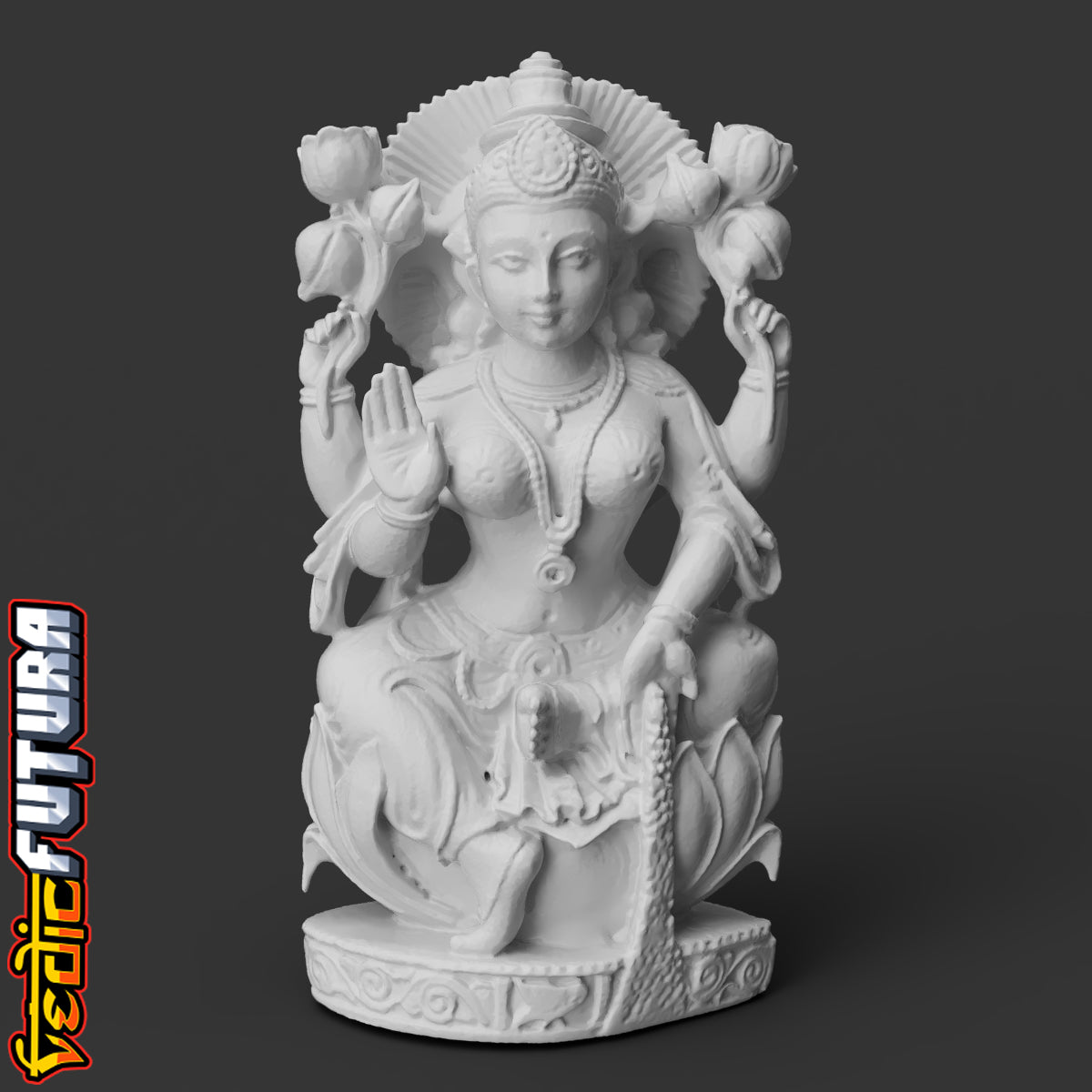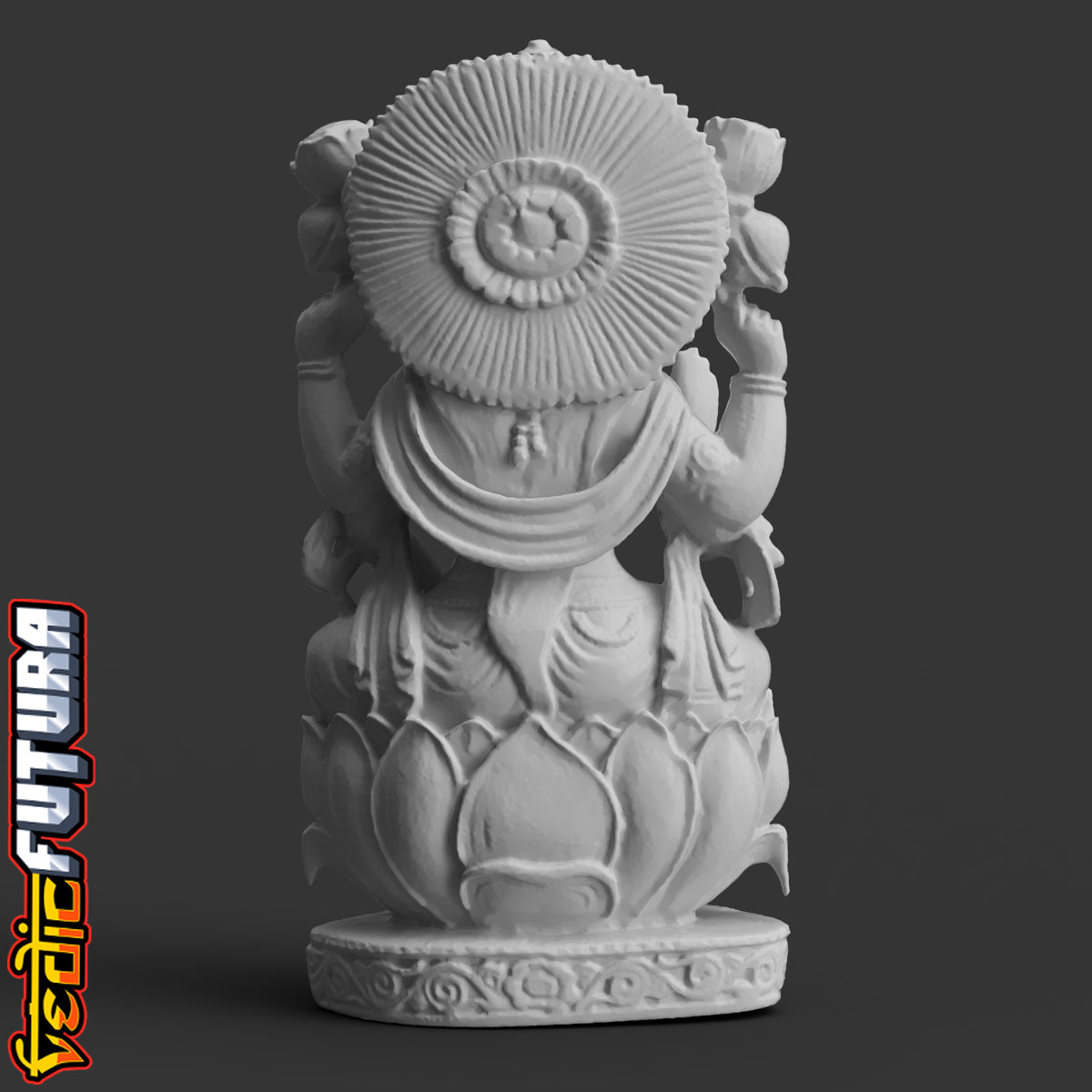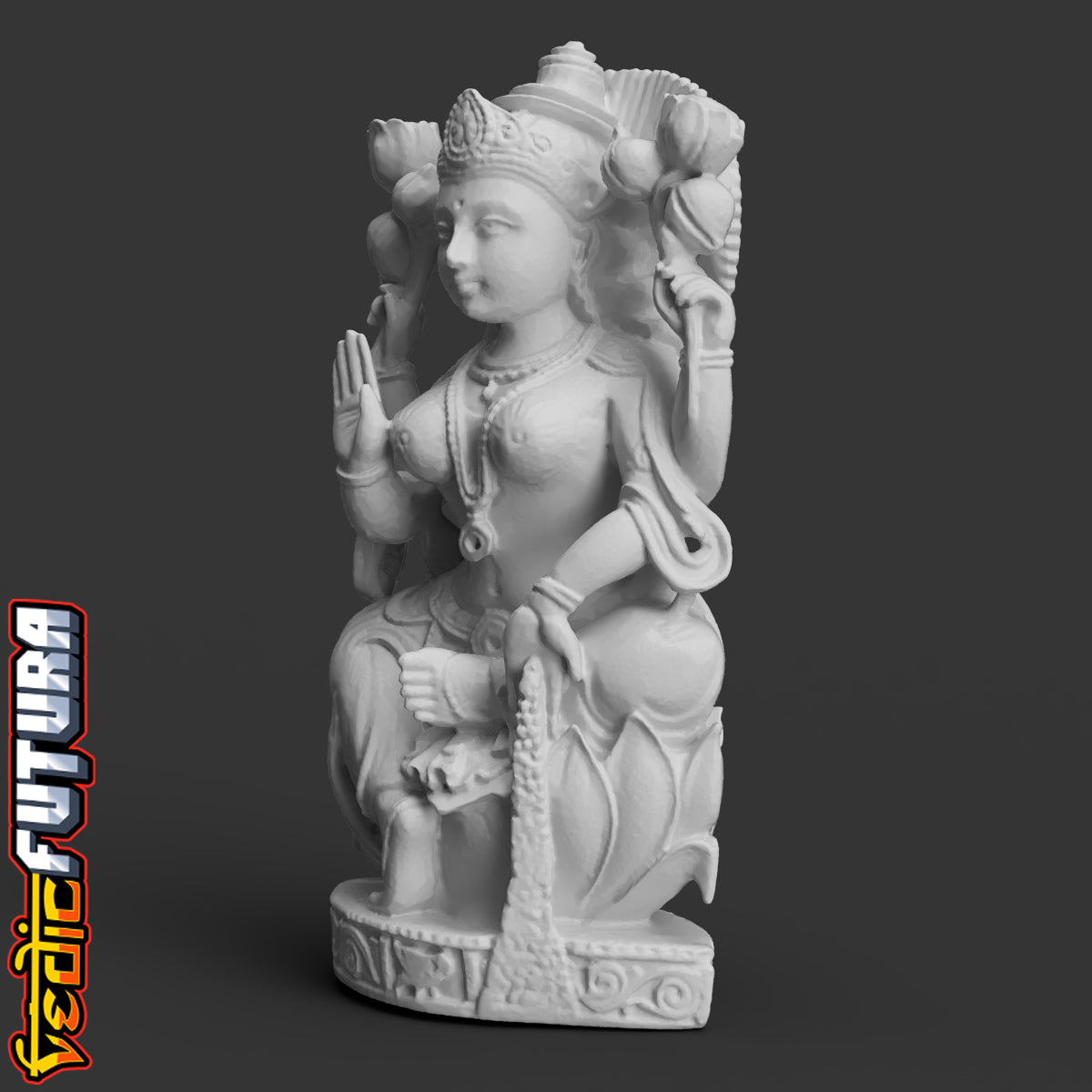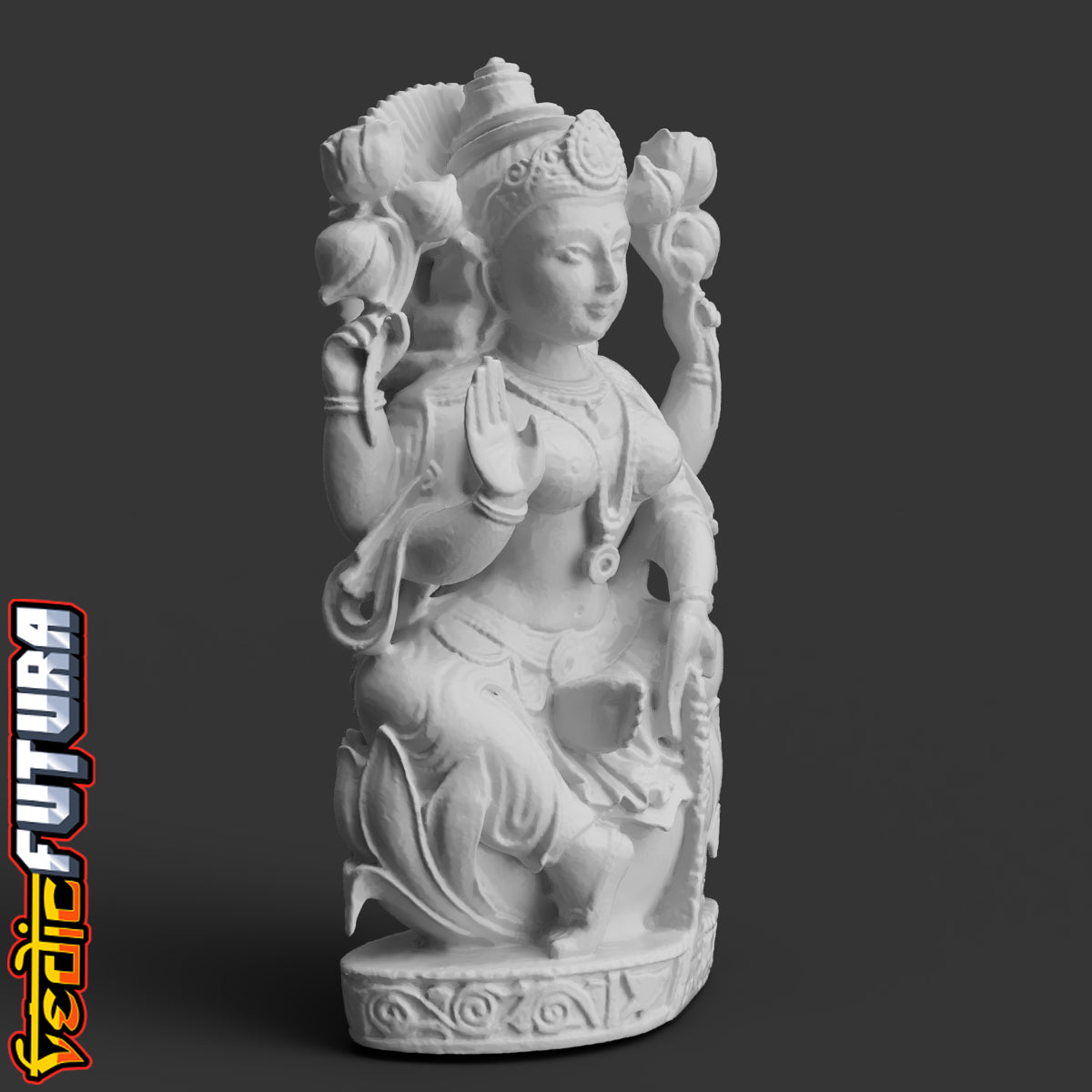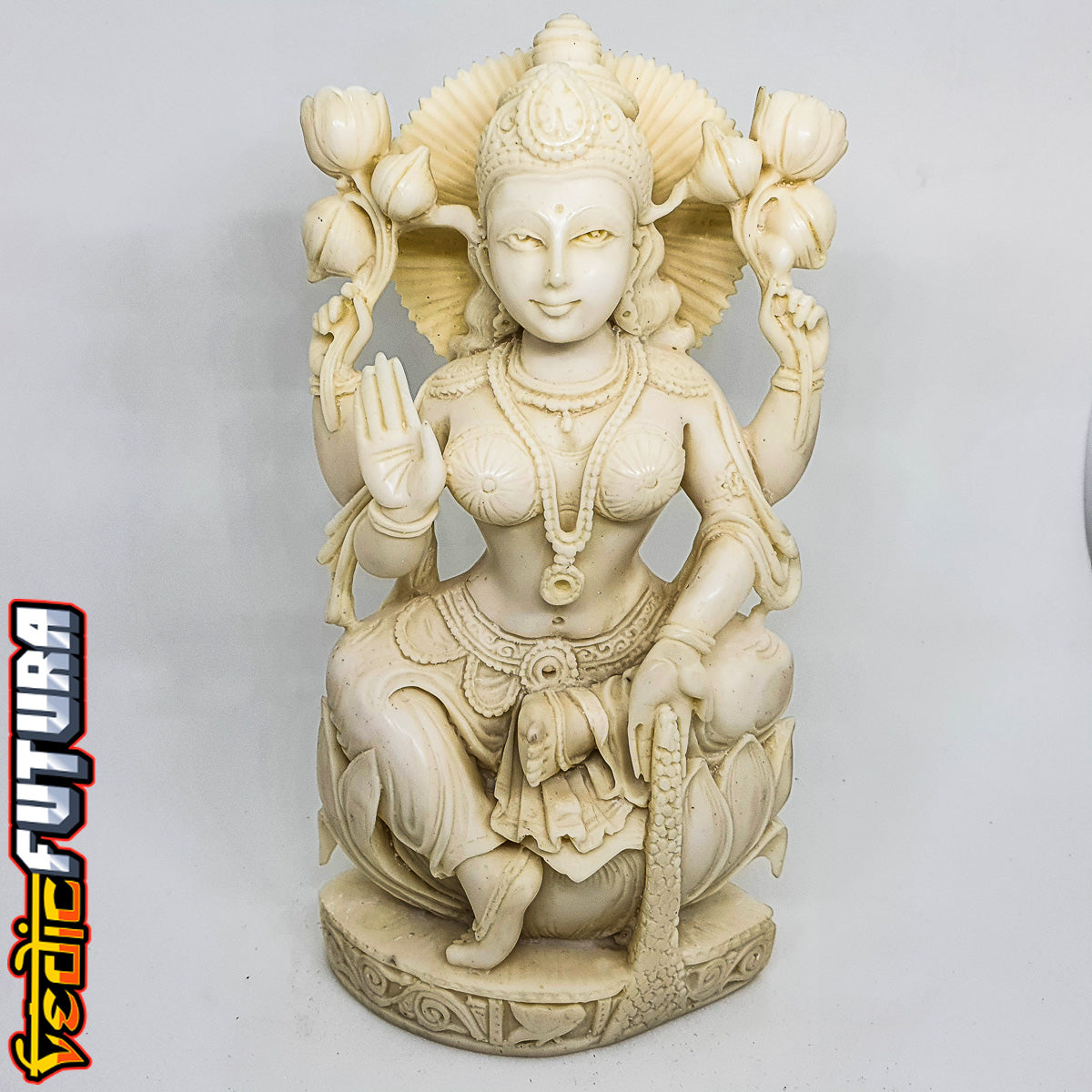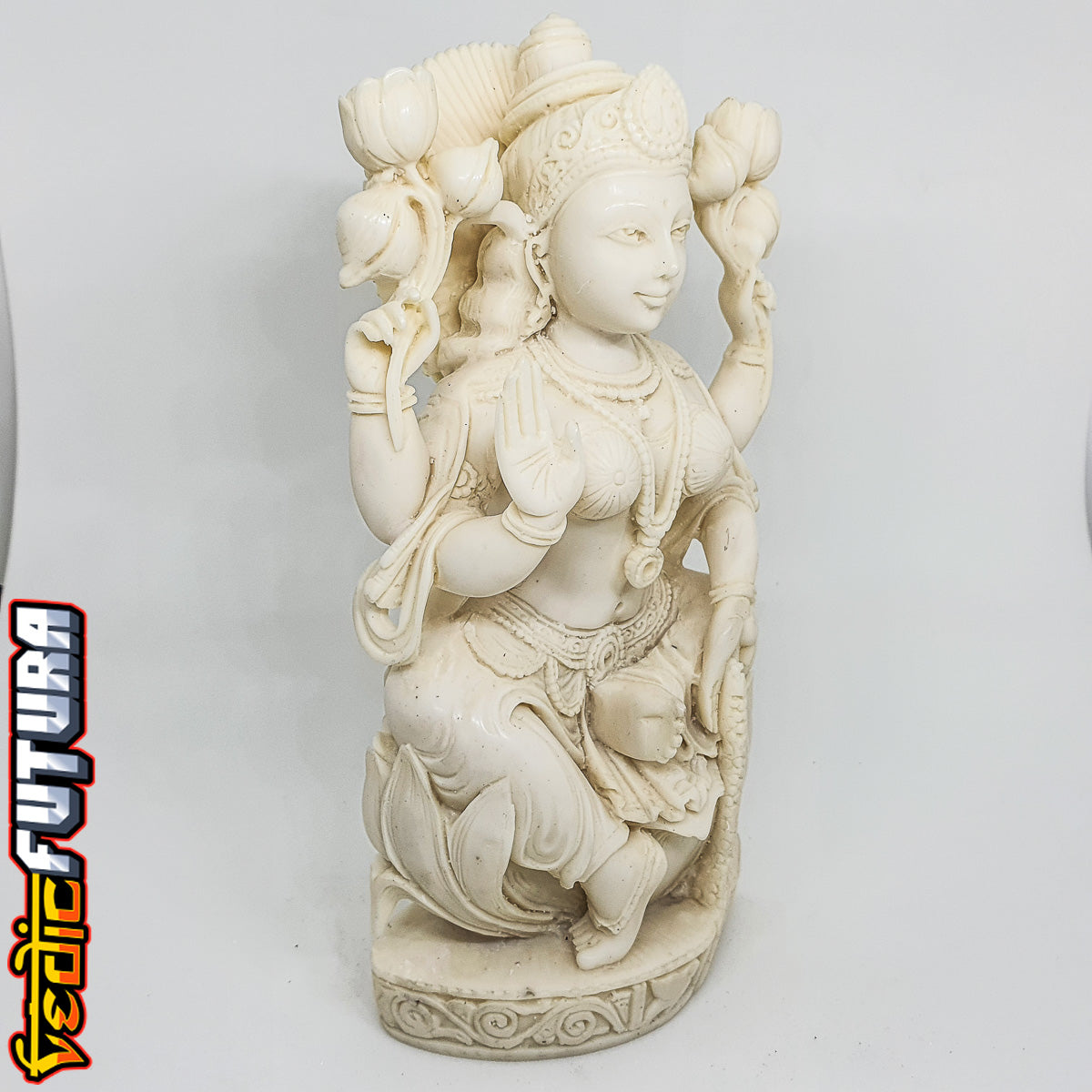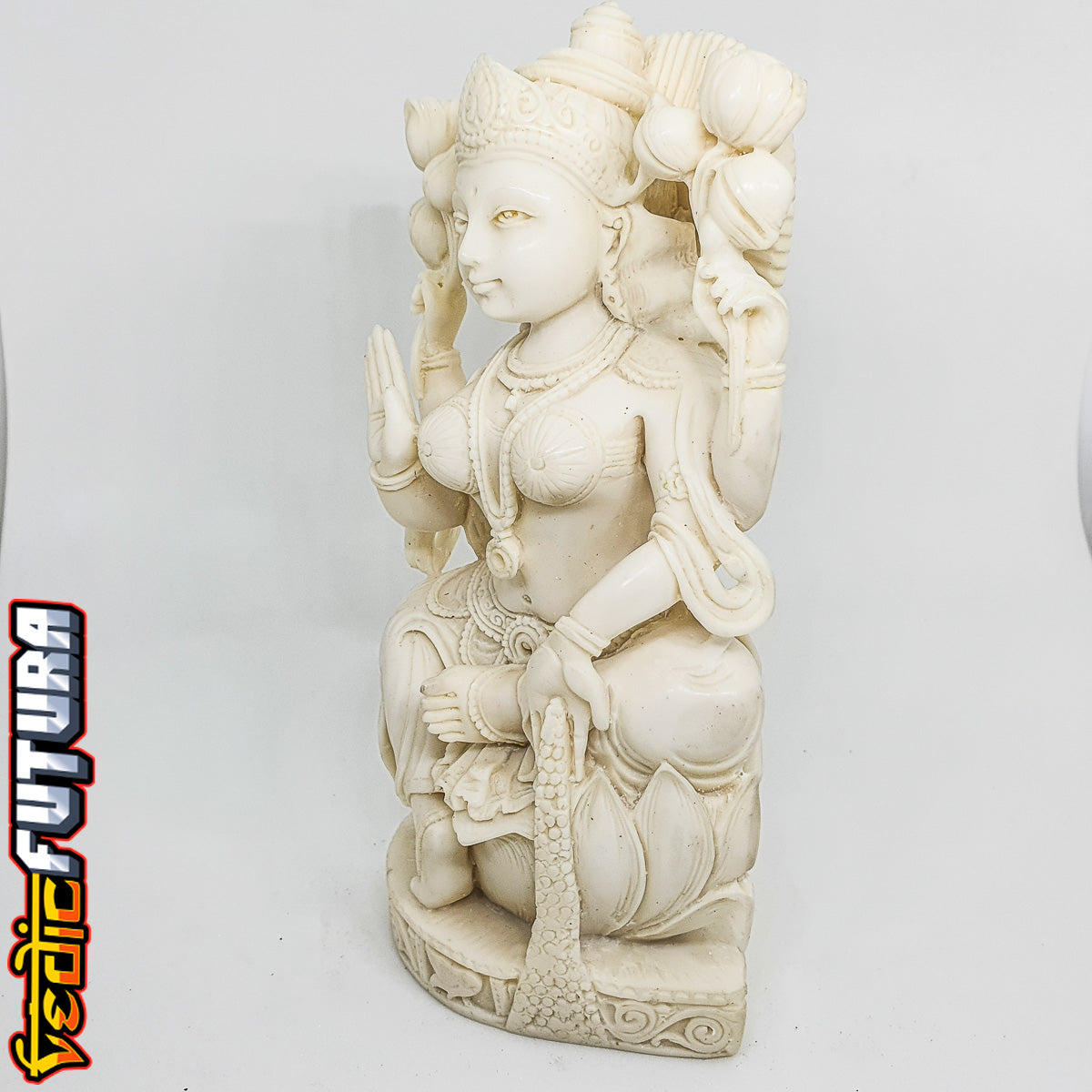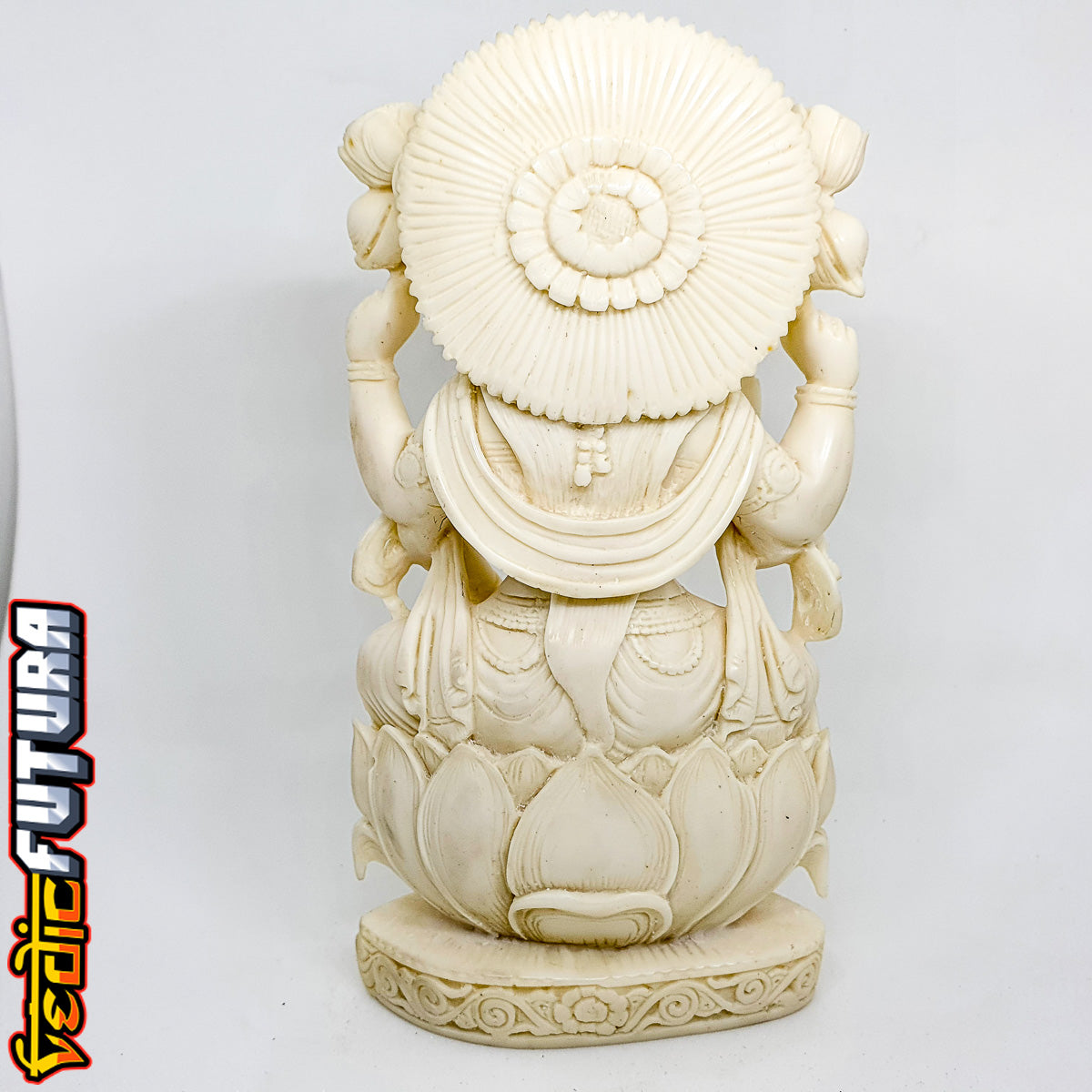Padmapriya Lakshmi - One Who Loves Lotus
Padmapriya Lakshmi - One Who Loves Lotus
Couldn't load pickup availability
Lakshmi is depicted in Indian art as an elegantly dressed, prosperity-showering golden-coloured woman standing or sitting in padmasana on a lotus throne, while holding a lotus in her hand, symbolizing fortune, self-knowledge, and spiritual liberation.Her iconography shows her with four hands, which represent the four aspects of human life important to Hindu culture: dharma, kāma, artha, and moksha.
Lakshmi has numerous epithets and numerous ancient Stotram and Sutras of Hinduism recite her various names: such as Sri (Radiance, eminence, splendor, wealth), Padmā (she who is mounted upon or dwelling in a lotus or She of the lotus), Kamalā or Kamalatmika (She of the lotus), Padmapriyā (Lotus-lover), Padmamālādhāra Devī (Goddess bearing a garland of lotuses), Padmamukhī (Lotus-faced-she whose face is as like as a lotus), Padmākṣī: (Lotus-eyed - she whose eyes are as beautiful as a lotus), Padmahasta: (Lotus-hand - she whose hand is holding [a] lotus[es]), Padmasundarī (She who is as beautiful as a lotus)
In Lakshmi's iconography, she is either sitting or standing on a lotus and typically carrying a lotus in one or two hands. The lotus carries symbolic meanings in Hinduism and other Indian traditions. It symbolizes knowledge, self-realization, and liberation in the Vedic context, and represents reality, consciousness, and karma ('work, deed') in the Tantra (Sahasrara) context. The lotus, a flower that blooms in clean or dirty water, also symbolizes purity regardless of the good or bad circumstances in which it grows. It is a reminder that good and prosperity can bloom and not be affected by evil in one's surroundings.
Archaeological discoveries and ancient coins suggest the recognition and reverence for Lakshmi existing by the 1st millennium BCE.
Please Note: This is a digital 3D model (STL/3mf file) for 3D printing – not a physical object.
No physical product will be shipped.
After purchase, download links will be shown on your screen and sent to your email.
Please read the full website description and terms before purchasing.
